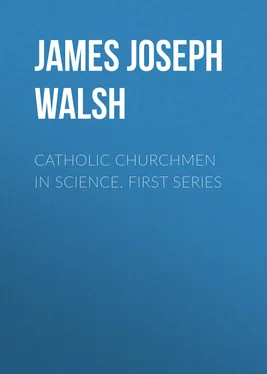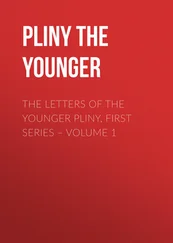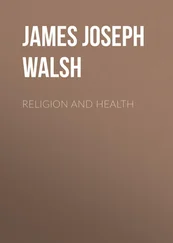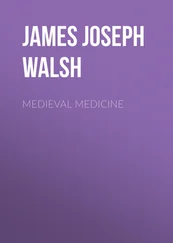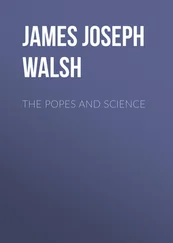James Walsh - Catholic Churchmen in Science. First Series
Здесь есть возможность читать онлайн «James Walsh - Catholic Churchmen in Science. First Series» — ознакомительный отрывок электронной книги совершенно бесплатно, а после прочтения отрывка купить полную версию. В некоторых случаях можно слушать аудио, скачать через торрент в формате fb2 и присутствует краткое содержание. Жанр: foreign_prose, foreign_religion, foreign_antique, на английском языке. Описание произведения, (предисловие) а так же отзывы посетителей доступны на портале библиотеки ЛибКат.
- Название:Catholic Churchmen in Science. First Series
- Автор:
- Жанр:
- Год:неизвестен
- ISBN:нет данных
- Рейтинг книги:4 / 5. Голосов: 1
-
Избранное:Добавить в избранное
- Отзывы:
-
Ваша оценка:
- 80
- 1
- 2
- 3
- 4
- 5
Catholic Churchmen in Science. First Series: краткое содержание, описание и аннотация
Предлагаем к чтению аннотацию, описание, краткое содержание или предисловие (зависит от того, что написал сам автор книги «Catholic Churchmen in Science. First Series»). Если вы не нашли необходимую информацию о книге — напишите в комментариях, мы постараемся отыскать её.
Catholic Churchmen in Science. First Series — читать онлайн ознакомительный отрывок
Ниже представлен текст книги, разбитый по страницам. Система сохранения места последней прочитанной страницы, позволяет с удобством читать онлайн бесплатно книгу «Catholic Churchmen in Science. First Series», без необходимости каждый раз заново искать на чём Вы остановились. Поставьте закладку, и сможете в любой момент перейти на страницу, на которой закончили чтение.
Интервал:
Закладка:
This Basil Valentine (to accept the only name we have), as we can judge very well from his writings, eminently deserves the designation of the last of the alchemists and the first of the chemists. There is practically a universal recognition of the fact now that he deserves also the title of Founder of Modern Chemistry, not only because of the value of the observations contained in his writings, but also because of the fact that they proved so suggestive to certain scientific geniuses during the century succeeding Valentine's life. Almost more than to have added to the precious heritage of knowledge for mankind is it a boon for a scientific observer to have awakened the spirit of observation in others and to be the founder of a new school of thought. This Basil Valentine undoubtedly did.
Besides, his work furnishes evidence that the investigating spirit was abroad just when it is usually supposed not to have been, for the Thuringian monk surely did not do all his investigating alone, but must have received as well as given many a suggestion to his contemporaries.
In the history of education there are two commonplaces that are appealed to oftener than any other as the sources of material with regard to the influence of the Catholic Church on education during the centuries preceding the Reformation. These are the supposed idleness of the monks, and the foolish belief in the transmutation of metals and the search for the philosopher's stone which dominated the minds of so many of the educated men of the time. It is in Germany especially that these two features of the pre-Reformation period are supposed to be best illustrated. In recent years, however, there has come quite a revolution in the feelings even of those outside of the Church with regard to the proper appreciation of the work of the monastic scholars of these earlier centuries. Even though some of them did dream golden dreams over their alembics, the love of knowledge meant more to them, as to the serious students of any age, than anything that might be made by it. As for their scientific beliefs, if there can be a conversion of one element into another, as seems true of radium, then the possibility of the transmutation of metals is not so absurd as, for a century or more, it has seemed; and it is not impossible that at some time even gold may be manufactured out of other metallic materials.
Of course, a still worthier change of mind has come over the attitude of educators because of the growing sense of appreciation for the wonderful work of the monks of the Middle Ages, and even of those centuries that are supposed to show least of the influence of these groups of men who, forgetting material progress, devoted themselves to the preservation and the cultivation of the things of the spirit. The impression that would consider the pre-Reformation monks in Germany as unworthy of their high calling in the great mass is almost entirely without foundation. Obscure though the lives of most of them were, many of them rose above their environment in such a way as to make their work landmarks in the history of progress for all time.
Because their discoveries are buried in the old Latin folios that are contained only in the best libraries, not often consulted by the modern scientist, it is usually thought that the scientific investigators of these centuries before the Reformation did no work that would be worth while considering in our present day. It is only some one who goes into this matter as a labor of love who will consider it worth his while to take the trouble seriously to consult these musty old tomes. Many a scholar, however, has found his labor well rewarded by the discovery of many an anticipation of modern science in these volumes so much neglected and where such treasure-trove is least expected. Professor Clifford Allbutt, the Regius Professor of physics at the University of Cambridge, in his address on "The Historical Relations of Medicine and Surgery Down to the End of the Sixteenth Century," which was delivered at the St. Louis Congress of Arts and Sciences during the Exposition in 1904, has shown how much that is supposed to be distinctly modern in medicine, and above all in surgery, was the subject of discussion at the French and Italian universities of the thirteenth century. William Salicet, for instance, who taught at the University of Bologna, published a large series of case histories, substituted the knife for the Arabic use of the cautery, described the danger of wounds of the neck, investigated the causes of the failure of healing by first intention, and sutured divided nerves. His pupil, Lanfranc, who taught later at the University of Paris, went farther than his master by distinguishing between venous and arterial hemorrhage, requiring digital compression for an hour to stop hemorrhage from the venae pulsatiles --the pulsating veins, as they were called–and if this failed because of the size of the vessel, suggesting the application of a ligature. Lanfranc's chapter on injuries to the head still remains a noteworthy book in surgery that establishes beyond a doubt how thoughtfully practical were these teachers in the medieval universities. It must be remembered that at this time all the teachers in universities, even those in the medical schools as well as those occupied with surgery, were clerics. Professor Allbutt calls attention over and over again to this fact, because it emphasizes the thoroughness of educational methods, in spite of the supposed difficulties that would lie in the way of an exclusively clerical teaching staff.
In chemistry the advances made during the thirteenth, fourteenth, and fifteenth centuries were even more noteworthy than those in any other department of science. Albertus Magnus, who taught at Paris, wrote no less than sixteen treatises on chemical subjects, and, notwithstanding the fact that he was a theologian as well as a scientist and that his printed works filled sixteen folio volumes, he somehow found the time to make many observations for himself and performed numberless experiments in order to clear up doubts. The larger histories of chemistry accord him his proper place and hail him as a great founder in chemistry and a pioneer in original investigation.
Even St. Thomas of Aquin, much as he was occupied with theology and philosophy, found some time to devote to chemical questions. After all, this is only what might have been expected of the favorite pupil of Albertus Magnus. Three treatises on chemical subjects from Aquinas's pen have been preserved for us, and it is to him that we are said to owe the origin of the word amalgam, which he first used in describing various chemical methods of metallic combination with mercury that were discovered in the search for the genuine transmutation of metals.
Albertus Magnus's other great scientific pupil, Roger Bacon, the English Franciscan friar, followed more closely in the physical scientific ways of his great master. Altogether he wrote some eighteen treatises on chemical subjects. For a long time it was considered that he was the inventor of gunpowder, though this is now known to have been introduced into Europe by the Arabs. Roger Bacon studied gunpowder and various other explosive combinations in considerable detail, and it is for this reason that he obtained the undeserved reputation of being an original discoverer in this line. How well he realized how much might be accomplished by means of the energy stored up in explosives can perhaps be best appreciated from the fact that he suggested that boats would go along the rivers and across the seas without either sails or oars and that carriages would go along the streets without horse or man power. He considered that man would eventually invent a method of harnessing these explosive mixtures and of utilizing their energies for his purposes without danger. It is curiously interesting to find, as we begin the twentieth century, and gasolene is so commonly used for the driving of automobiles and motor boats and is being introduced even on railroad cars in the West as the most available source of energy for suburban traffic, that this generation should only be fulfilling the idea of the old Franciscan friar of the thirteenth century, who prophesied that in explosives there was the secret of eventually manageable energy for transportation purposes.
Читать дальшеИнтервал:
Закладка:
Похожие книги на «Catholic Churchmen in Science. First Series»
Представляем Вашему вниманию похожие книги на «Catholic Churchmen in Science. First Series» списком для выбора. Мы отобрали схожую по названию и смыслу литературу в надежде предоставить читателям больше вариантов отыскать новые, интересные, ещё непрочитанные произведения.
Обсуждение, отзывы о книге «Catholic Churchmen in Science. First Series» и просто собственные мнения читателей. Оставьте ваши комментарии, напишите, что Вы думаете о произведении, его смысле или главных героях. Укажите что конкретно понравилось, а что нет, и почему Вы так считаете.
